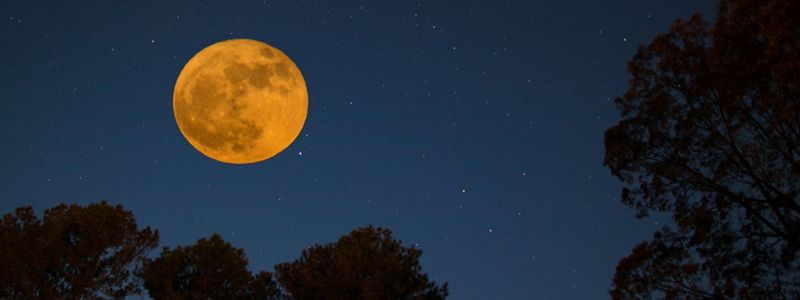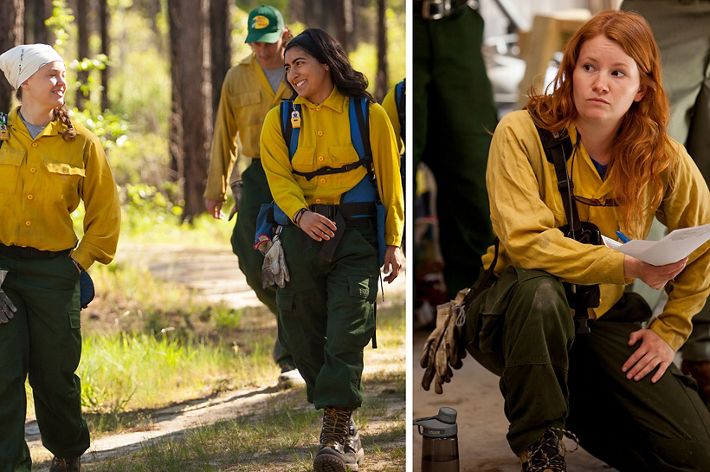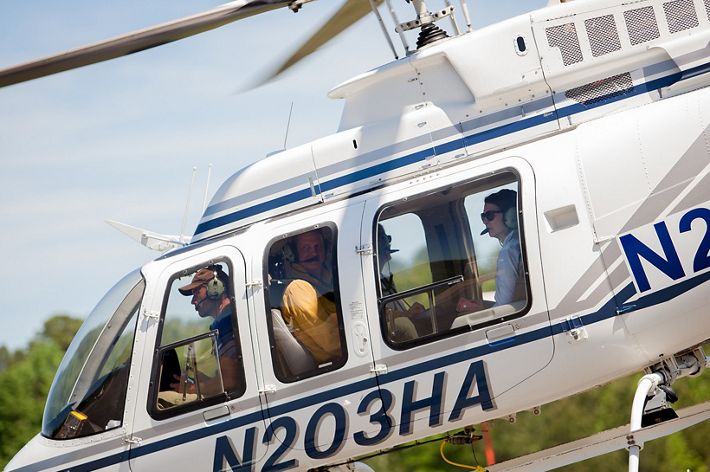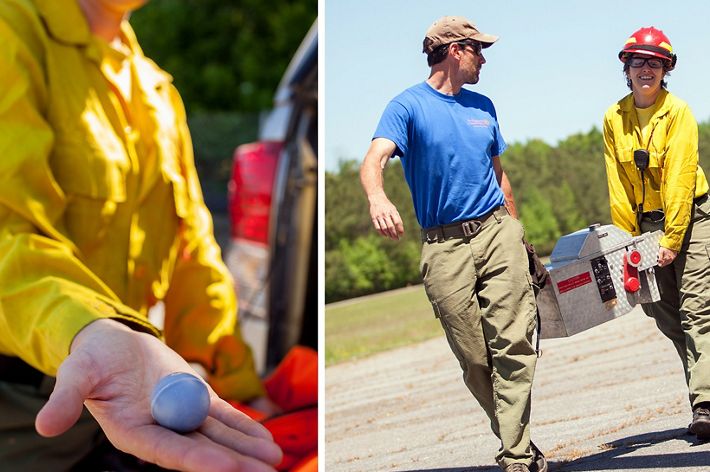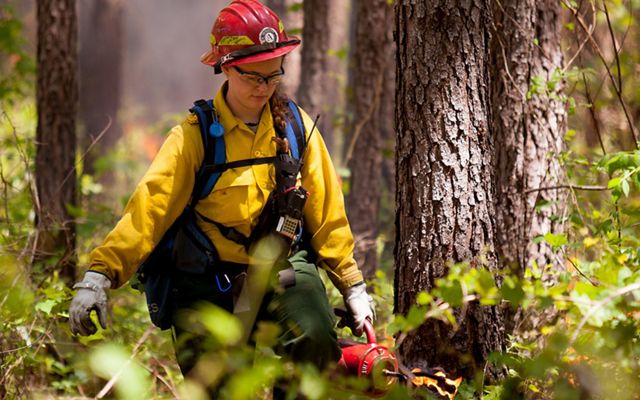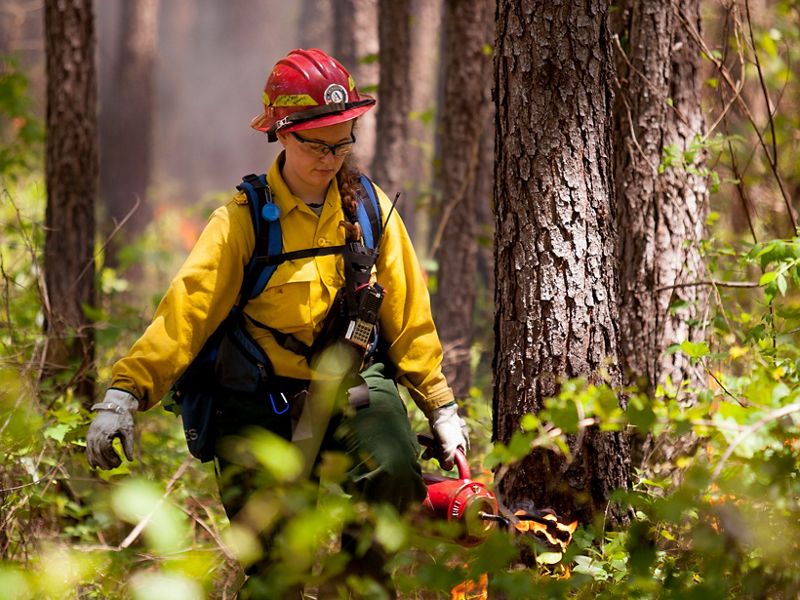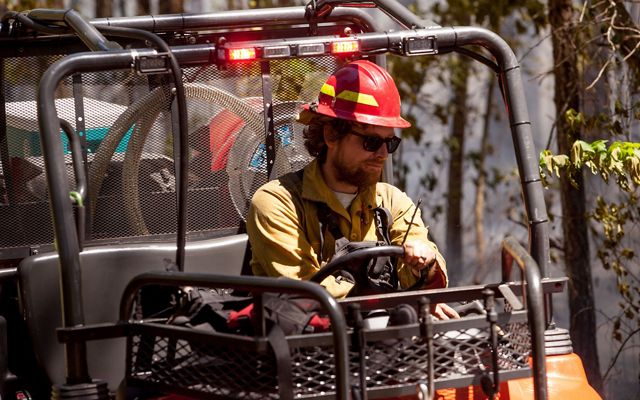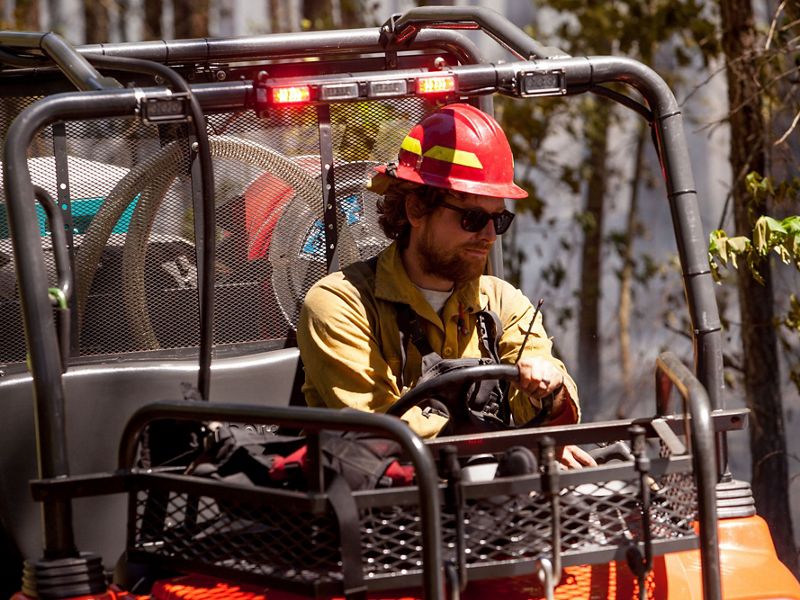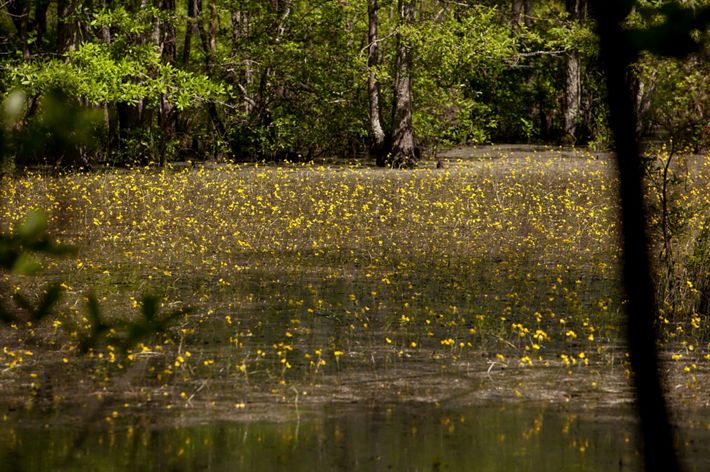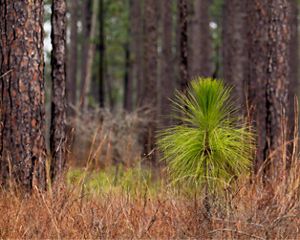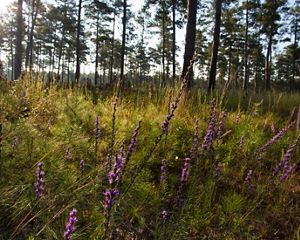Fired Up at Piney Grove
A record setting controlled burn aims to restore longleaf pine forests and support habitat for the red-cockaded woodpecker.

Traffic is heavier than usual this morning at Piney Grove Preserve. In other words, there’s a truck ahead of me on the unpaved road winding through the forest in Sussex County. I turn off to follow a cloud of dust through an open gate and then along a narrow lane.
Parking, too, is more challenging than usual. I squeeze into a line of trucks shouldering the lane as it funnels into a small clearing fronting a building. More trucks, trailers and all-terrain vehicles are soon tucked into every space between two pines.
Inside the hangar-like structure, Bobby Clontz occupies a corner office. In fact, it’s the only office. At 9:00 a.m., various milling groups form a rough circle, and Bobby introduces himself for the benefit of any first-timers: “I’m the preserve manager here at Piney Grove, and I’ll be leading the burn today.”
In the hours ahead, fire crews on the ground and in the sky will attempt to burn more than 1,800 acres owned by The Nature Conservancy and the state. If successful, today’s controlled burn will be the largest ever ignited at Piney Grove—helping restore a threatened species and its globally rare forest home.
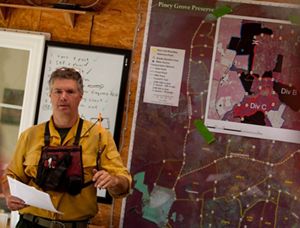


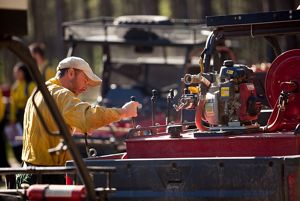
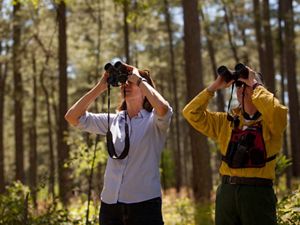
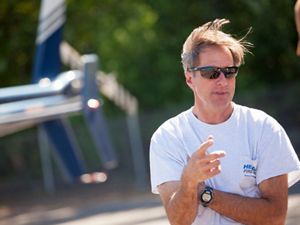
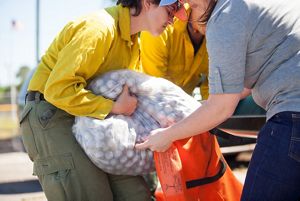
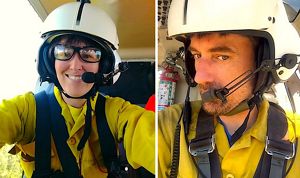
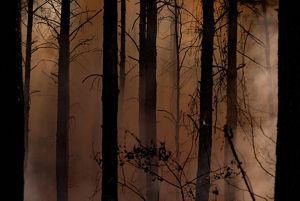
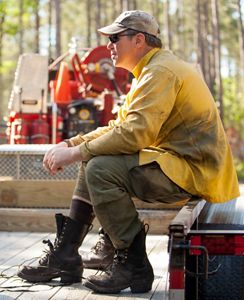

Prepping the Teams: TNC Stewardship and Fire Manager Bobby Clontz leads the morning briefing prior to the start of a controlled burn at Piney Grove Preserve. © Daniel White / TNC

Good Fire: Longleaf pine is a fire adapted species. It depends on fire to reveal bare mineral soil, stimulate seed germination and reduce competition from faster-growing tree species. © Kyle LaFerriere

Piney Grove: Burn boss Bobby Clontz at Piney Grove Preserve. © Kyle LaFerriere

Checking Equipment: John Kirk (Virginia Department of Game and Inland Fisheries) checks equipment. DGIF was one of five partner agencies taking part in the controlled burn at Piney Grove. © Kyle LaFerriere

Ground Observations: Virginia state director Locke Ogens (l.) and Senior Scientist Judy Dunscomb (r.) observe red-cockaded woodpecker cavity trees prior to the burn teams moving into the unit. © Kyle LaFerriere

Aerial Ignition: HeloAir pilot Whit Baldwin prior to liftoff. © Kyle LaFerriere

Loading the PSD: Plastic spheres containing potassium permaganate are injected with glycol before being released from the helicopter. The chemical reaction ignites fuels on the ground. © Kyle LaFerriere

Piney Grove: TNC's Nikole Simmons and Sam Lindblom snap selfies from the air. © Nikole Simmons, Sam Lindblom / TNC

Piney Grove: Light filters through the smoke during the largest ever controlled burn ignited at Piney Grove Preserve. © Kyle LaFerriere

Piney Grove: Volunteer Tim Craig at the end of the day's burn activities. © Kyle LaFerriere
Nearly 40 fire team members from TNC and an alphabet soup of agencies will collaborate on today’s burn.
Participating partners include the Virginia departments of Conservation and Recreation (Natural Heritage Program), Wildlife Resources and Forestry, as well as the U.S. Fish and Wildlife Service. The service is also overseeing a team of young AmeriCorps volunteers.
This level of collaboration wasn't reached overnight. Back in the early 2000s, Virginia’s last few red-cockaded woodpeckers were clinging to survival at TNC's newly established Piney Grove Preserve. The challenge facing this endangered species was the near-disappearance of its pine savanna habitat.
Years of fire suppression had allowed the formerly open, grassy pine forest to become overgrown and made the woodpeckers more vulnerable to predators. Red-cockaded woodpeckers evolved in concert with and now depend on pine savannas. This habitat evolved over many centuries as lightning strikes and Native American burning made fire a regular part of the landscape. Its rich diversity of native grasses, wildflowers and trees—flame-resistant longleaf pine seedlings, in particular—also depends on fire to stimulate seed germination and reduce competition.
TNC and our partners have worked together since 1999 to return fire to this landscape. For this forest, especially for 177 acres of recently planted longleaf, today's burn will be like receiving a spa treatment and cocktail of vitamins.
Since TNC established Piney Grove, our preserve has more than doubled to its present 3,200 acres. We've also worked with the state to protect additional habitat at Big Woods State Forest and Big Woods Wildlife Management Area. This combined conservation area gives the woodpeckers more than 7,500 acres to roam.
Along with land protection comes a shared commitment to repeated controlled burning, which is required to achieve and maintain the desired habitat. Today's burn will be almost evenly divided between state and TNC lands.
After reviewing the burn plan and topics ranging from the weather forecast to safety precautions, Bobby ends the briefing. The three ground divisions meet briefly to go over assignments and check equipment. Crews then disperse from the work station to travel to their stations, with a goal of igniting test fires within the hour.
I head for the Wakefield Municipal Airport to rendezvous with the aerial-ignition team, arriving shortly before their helicopter touches down from a reconnaissance flight. Several colleagues from Charlottesville emerge, including (former) state director Locke Ogens, who is getting a bird's-eye view of this massive restoration project.
TNC's Sam Lindblom and Nikole Simmons give us a quick primer on the equipment they’ll be using for aerial ignition. “We’re service providers for the folks on the ground,” says Sam. As Bobby’s ground crews create ample black space along the boundaries, Sam works with the pilot to fill in the interior.
Nikole, meanwhile, keeps "as busy as a short-order cook,” feeding the PSD (plastic sphere dispenser) at the appropriate rate. The machine activates and spits out chemically treated spheres resembling ping-pong balls.
Upon landing, each sphere bursts into a small ball of flame. “Picture lighting a single sheet of balled-up newspaper,” Sam explains.
With word that the ground crews are progressing nicely, I head back to Piney Grove. The closest action involves a mixed team of agency staff and AmeriCorps members, using drip torches to ignite a roughly 20-yard buffer along the fire line.
Most of the proverbial boots on the ground are engaged in watching and patrolling. Crew members armed with rakes called pulaskis keep the fire at their backs, scanning for any stray embers that might land on the wrong side of the fire break.
Others drive the lines in trucks and all-terrain vehicles equipped with water tanks and hoses, extinguishing any flames threatening to escape.
The burn crews still have at least two hours of labor ahead as I turn back, hoping to beat the all-too-real traffic through Richmond. I will learn the following day that they succeeded in burning 1,830 acres, the single largest burn here to date.
But at the moment, as I always do before leaving Piney Grove, I pull over to the roadside to walk along the edge of a beautiful wetland. I’m here for the scenery, of course, but also appreciate the amazing work that wetlands do as nature’s water filters.
For the red-cockaded woodpecker, Piney Grove and Big Woods are home. But they mean so much more. The soughing of the wind through the pines overhead reconnects us to our history and—if we listen closely—to our humanity.
Across the water, I hear a burn crew pass and watch a gauze of smoke signal their advance. The smoke lifts almost as soon as it appears, and a near-silence once again descends upon the swamp.
Stay In Touch
Sign up to receive monthly conservation news and updates from Virginia. Get a preview of Virginia's Nature News email
